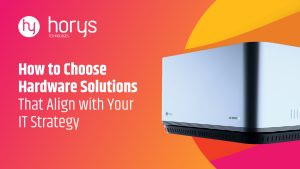In a rapidly evolving digital landscape, the need for scalable hardware solutions has never been greater. Whether it’s a small business growing into new markets or a global enterprise handling massive data volumes, the ability to scale infrastructure seamlessly is essential. Scalable hardware ensures businesses remain agile, competitive, and efficient while adapting to fluctuating demands.
This guide offers a deep dive into scalable hardware solutions, covering everything from the foundational concepts to industry applications, challenges, and best practices for implementation. We’ll also explore emerging trends shaping the future of scalable technology.
Scalable Hardware Solutions:
Scalability in hardware is the ability of systems to handle increased workloads or expand their capacity while maintaining performance and efficiency. As digital transformation accelerates, businesses across all sectors are generating unprecedented amounts of data, driving demand for scalable hardware solutions.
Why Scalability Matters
- Business Growth: Expanding operations, customer bases, or markets often requires additional computational, storage, and networking resources.
- Dynamic Workloads: Seasonal spikes, unexpected traffic, or new service launches require systems that can scale without downtime.
- Cost Control: Scalable hardware eliminates over-provisioning, allowing businesses to invest incrementally as needed.
Example: An e-commerce platform experiencing a 500% increase in traffic during the holiday season must scale its hardware infrastructure to ensure smooth user experiences without performance degradation.
1. What is Scalable Hardware?
Scalable hardware is designed to grow alongside an organization, offering the flexibility to add resources such as CPUs, GPUs, storage, or network nodes.
Key Characteristics of Scalable Hardware
- Modular Design: Components can be added, removed, or replaced without disrupting operations.
- Performance Consistency: Scalable systems maintain optimal performance even under increased workloads.
- Future-Proofing: Scalability ensures compatibility with emerging technologies and evolving business needs.
Types of Scalability
- Vertical Scaling (Scaling Up): Enhancing the capacity of existing systems, such as adding more memory or faster processors to a server.
- Horizontal Scaling (Scaling Out): Adding additional systems, such as new servers, to distribute workloads across a larger infrastructure.
2. The Core Benefits of Scalable Hardware
- Enhanced Performance: Scalability ensures that systems maintain speed, reliability, and responsiveness as demand grows.
- Cost Savings and ROI: Incremental investments reduce upfront costs and maximize resource efficiency.
- Flexibility and Adaptability: Scalable hardware can pivot quickly to meet evolving business requirements.
3. Key Components of Scalable Hardware
1. Modular Servers
- Blade Servers: Compact units that fit into a single chassis, enabling businesses to add compute power seamlessly.
- Rack Servers: Stackable systems that support various configurations for scaling.
2. Scalable Storage Solutions
- NAS (Network-Attached Storage): Affordable and easy to scale for small to medium businesses.
- SAN (Storage Area Network): High-speed networks designed for enterprise-level storage scalability.
3. Networking Hardware
- High-Speed Switches: Devices like Cisco Catalyst provide the foundation for expanding network infrastructure.
- Load Balancers: Distribute workloads across multiple servers, ensuring system stability.
4. Scalable Storage Systems
Key Storage Technologies
- Cloud Storage: Platforms like AWS S3 and Google Cloud Storage provide virtually unlimited capacity.
- Distributed Storage Systems: Spread data across multiple nodes to improve reliability and performance.
- Hybrid Storage Models: Combine on-premises and cloud storage for optimal scalability.
5. Networking Scalability
Technological Solutions
- Software-Defined Networking (SDN): Centralized control for dynamic allocation of network resources.
- 5G Networks: Provides faster speeds and better connectivity for expanding IoT ecosystems.
- Wi-Fi 6: Supports more devices with improved efficiency.
6. Computing Scalability
Key Solutions
- CPUs and GPUs: Multi-core processors like AMD EPYC and NVIDIA A100 accelerate high-performance computing.
- AI Chips: Optimized for machine learning workloads, reducing training times and boosting inferencing capabilities.
- High-Performance Computing (HPC): Supports simulations and large-scale data analysis.
7. Data Centers and Scalability
- Modular Data Centers: Scalable units that grow with demand.
- Hyperscale Facilities: Built to handle massive workloads for cloud providers like Microsoft Azure.
- Cooling Innovations: Liquid and immersion cooling reduce energy costs and support scalable expansion.
8. The Role of Virtualization and Cloud Integration
Key Technologies
- Virtual Machines (VMs): Multiple operating systems on a single server for efficient resource utilization.
- Containers: Lightweight, scalable environments for microservices.
- Hyperconverged Infrastructure (HCI): Combines storage, compute, and networking for seamless scalability.
9. Energy Efficiency in Scalable Hardware
- Renewable Energy Integration: Many data centers now run on solar or wind power.
- Optimized Cooling Systems: Innovations like immersion cooling lower energy consumption.
10. Industry-Specific Applications
- AI and ML: Scaling hardware to train large neural networks.
- IoT: Managing billions of connected devices with edge computing.
- Gaming: Scalable cloud infrastructure supports millions of concurrent players.
11. Challenges in Implementing Scalable Hardware
- High Initial Costs: Advanced systems require significant upfront investments.
- Integration Complexity: Legacy systems often need extensive updates to support scalability.
- Maintenance and Monitoring: Scalable systems require proactive management to ensure optimal performance.
12. Best Practices for Implementing Scalable Solutions
- Conduct Needs Assessments: Forecast future workloads and demands.
- Leverage Automation: Use AI-driven tools to monitor and scale systems dynamically.
- Adopt a Hybrid Approach: Combine cloud and on-premises solutions for maximum flexibility.
13. Emerging Trends in Scalable Hardware
- Quantum Computing: Revolutionizing scalability for complex calculations.
- Neuromorphic Chips: Mimic human brains for ultra-efficient scaling in AI.
- Autonomous Scaling: AI-driven systems that adjust resources in real-time.
Conclusion
Scalable hardware solutions are no longer optional for businesses navigating today’s fast-paced digital environment. From modular systems and cloud integrations to AI-driven scaling technologies, the ability to grow seamlessly is critical to unlocking peak performance. By adopting scalable solutions, businesses can future-proof their operations, optimize costs, and stay competitive in a constantly evolving landscape.
About Horys
A premier hardware and software solutions company, Horys’ technology is on par with global standards. Its offerings include a variety of hardware products like smartphones, tablets, and computers. And software products include server hosting and management solutions.
Disclaimer: This article combines insights from both human expertise and AI technology to provide informational content. It is for informational purposes only and should not be interpreted as financial advice or a recommendation to invest. Virtual asset investments are inherently volatile and risky. Horys provides no guarantee of accuracy or completeness for the information herein. Independent research and professional advice are recommended before engaging in any investment activity. Horys bears no liability for investment decisions based on this article.



